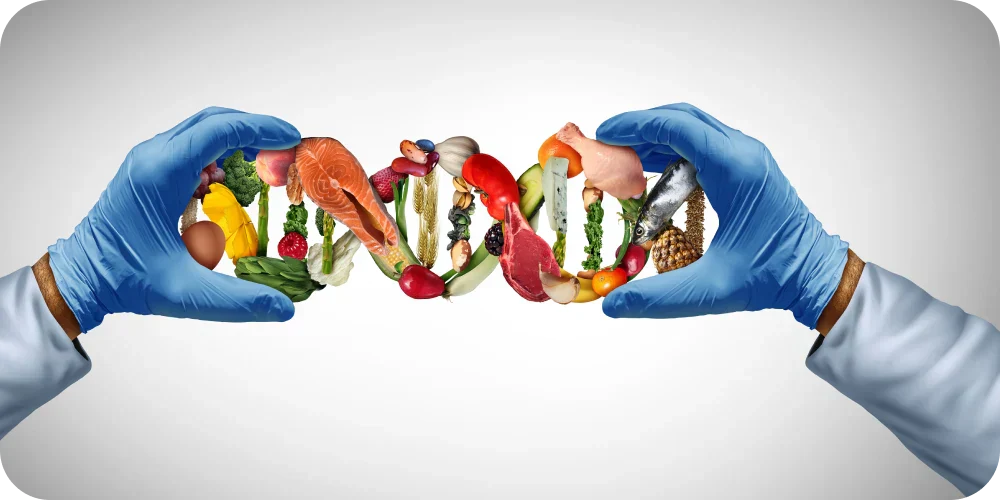How To Increase GLP-1 Naturally
Mene Mestanas
If you're looking for a gentle, natural way to feel more balanced and energised, supporting your GLP-1 levels might be a great place to start. This powerful hormone helps regulate your blood sugar and appetite, and when it’s working well, you just feel more in tune with your body.
Let’s explore how to support your body’s natural GLP-1 production through food, movement, and lifestyle habits that are easy to implement.
What is GLP-1 and Why Does It Matter?
GLP-1 (Glucagon-like Peptide-1) is a hormone your body releases after you eat. It helps:
-
Trigger insulin to manage blood sugar levels
-
Slow digestion, helping you feel full for longer
-
Reduce the release of glucagon (which raises blood sugar)
So, what does that mean for you? When GLP-1 is supported, your energy stays steadier, your appetite feels more manageable, and your body naturally works in balance. It’s a foundational part of your metabolic health, not just a trending term.
For more on how metabolism works, check out: What Is Metabolism?
Easy, Natural Ways to Boost GLP-1
Here’s the good news: you don’t need harsh supplements or complex routines to support GLP-1. Small, consistent changes in your diet and habits can make a big impact.
Let’s break it down.
1. Eat More Protein
Protein is one of the best natural triggers for GLP-1 release. It helps you feel full, supports muscle recovery, and gives your metabolism a gentle lift.
Try adding more of these to your meals:
-
Eggs
-
Beans and lentils
-
Greek yoghurt
-
Nuts and seeds
-
Lean meats or fish
A high-protein breakfast is a great place to start. It can set the tone for balanced energy all day long.
2. Prioritise Fibre
Fibre slows digestion and helps trigger that “full” feeling. It also supports the gut, which is key, since the gut microbiome plays a big role in GLP-1 production.
Go for:
-
Oats
-
Apples
-
Barley
-
Vegetables
-
Whole grains
Pro tip: resistant starches (like cooked-and-cooled potatoes or rice) are especially beneficial for feeding your good gut bacteria and supporting GLP-1.
3. Include Healthy Fats
Fats aren’t the enemy, in fact, healthy fats help regulate blood sugar, reduce inflammation, and support GLP-1 levels.
Try incorporating:
-
Avocados
-
Olive oil
-
Flaxseeds
-
Fatty fish like salmon
-
A small handful of nuts
Just remember: quality matters. Focus on whole, unprocessed sources of fat for the biggest benefit.
4. Support Your Gut with Prebiotics + Probiotics
Your gut microbiome is deeply linked to metabolic health, and certain gut bacteria can directly support GLP-1 production.
To feed those good bugs:
- Add prebiotics like onions, garlic, bananas, and asparagus
-
Enjoy probiotic foods like kefir, sauerkraut, yoghurt, or kombucha
This balance supports digestion, energy, and natural GLP-1 function.
5. Move Your Body (It Doesn’t Have to Be Intense!)
Regular movement helps increase GLP-1 and supports insulin sensitivity. The best part? You don’t need to overdo it.
Try:
-
Brisk walking after meals
- Strength training 2–3x per week
-
Dancing in your kitchen (yes, it counts!)
-
Short bursts of high-intensity movement, if you enjoy it
What matters most is that it’s something you enjoy and can stick with.
6. Slow Down When You Eat
Mindful eating helps your body release GLP-1 more efficiently. It also helps you notice when you’re actually full.
Tips to try:
-
Put your fork down between bites
-
Avoid distractions while eating (hello, no scrolling!)
-
Check in with your hunger mid-meal
-
Eat in a calm, relaxed environment when possible
Small shifts like these can have a surprising impact on how you feel after meals.
7. Get Better Sleep
Not getting enough sleep can throw off all your hunger hormones, including GLP-1.
Aim for 7–8 hours of quality sleep by:
-
Keeping a consistent bedtime
-
Avoiding screens an hour before bed
-
Creating a relaxing nighttime routine
Good sleep = better hormonal balance, appetite regulation, and energy the next day.
8. Manage Stress in Daily Life
Chronic stress can suppress GLP-1 and increase cravings. It also disrupts sleep, which creates a cycle.
To lower stress levels:
-
Practice daily breathwork or meditation
-
Try yoga or stretching before bed
-
Get outside, nature is a natural mood booster
-
Talk to someone, connection helps regulate cortisol
Even 5 minutes of calm can reset your system and support better balance.
Build Habits That Stick
The key to lasting change? Keep it simple and stack healthy habits into your daily routine.
A few ideas:
-
Add protein to your usual breakfast
-
Take a short walk after dinner
-
Swap out a snack for something fibre-rich
-
Pair a new habit (like taking probiotics) with something you already do (like brushing your teeth)
These small changes add up, and the easier they are to repeat, the more likely they’ll stick.
Want a Simple Place to Start?
Inara’s GLP-1 Fast-Melt Powder is designed to gently support your body’s natural GLP-1 response. It’s packed with ingredients that nourish your gut, balance your blood sugar, and help you feel more satisfied after meals, all in a tasty, convenient sachet.
Ready to try it for yourself? Learn how it works or check out what others are saying here.
Final Thoughts
Supporting your GLP-1 levels naturally isn’t about restriction or overhauling your life. It’s about reconnecting with the basics: good food, restful sleep, movement you love, and moments of calm.
Your body knows how to thrive; you just have to give it the right tools.
Want more tips on supporting your metabolism? Read: Top 10 Tips to Support a Healthy Metabolism Naturally
Frequently Asked Questions
What is GLP-1, and why is it important?
GLP-1 is a crucial hormone that helps keep your blood sugar in check and curbs your appetite by triggering insulin release and slowing down digestion. It's important because it plays a major role in managing weight and blood sugar levels.
How can I naturally boost my GLP-1 levels?
To naturally boost your GLP-1 levels, focus on eating high-protein foods, upping your fibre intake, and including healthy fats, while also exercising regularly and managing stress and sleep. Making these changes can really help!
What foods are good for enhancing GLP-1 production?
If you want to boost GLP-1 production, stick to whole grains, eggs, beans, high-fibre foods like oats and apples, and healthy fats such as avocados and nuts. These tasty options can help you out!
How does exercise affect GLP-1 levels?
Exercise boosts GLP-1 levels, especially with activities like strength training and aerobic workouts. So, getting active is a solid way to help those levels rise!
Why is sleep and stress management important for GLP-1 production?
Sleep and stress management are crucial because they keep your GLP-1 production in check. Prioritising quality sleep and practices like mindfulness can make a big difference in your well-being.



